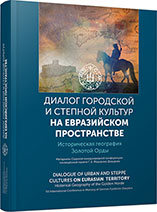Тунгусо-маньчжуры и дауры Приамурья: этнокультурное пограничье (по материалам фортификации)
The Manchu-Tungus and the Daurs of the Amur area: An ethno-cultural borderland (according to fortification materials)
Author(s): Olga V. Dyakova, Vladislav V. Shevchenko
Subject(s): History, Architecture, Military history, Middle Ages, 13th to 14th Centuries
Published by: Издательский дом Stratum, Университет «Высшая антропологическая школа»
Keywords: Amur area; Jurchens; Daurs; Mongols; hillforts; classification;Yuan dynasty;
Summary/Abstract: The authors offer a classification and analysis of the fortifications of the Middle Amur area, which were built in the Mongol Yuan dynasty period. It is established that the period was characterized by a single type of fortifications – the valley ones, subdivided into two varieties as to the rampart plane geometry: square and irregular (broken) ones. It seems that the smaller square hillforts belonged to the Mongol-speaking Daurs relocated in this region. Larger irregular-shaped fortifications, most likely, remained in the possession of the Jurchens, who controlled their tribal lands. The large square hillforts with complex fortifications apparently served as military and administrative centers of the Mongols, who controlled the territory and collected tribute. No clear distinctions between them have been tracked, but it is important that the valley hillforts belonging to two varieties simultaneously functioned on the same territory and each type of fortification fulfilled its own function.
Book: Диалог городской и степной культур на Евразийском пространстве. Историческая география Золотой Орды
- Page Range: 28-30
- Page Count: 3
- Publication Year: 2016
- Language: Russian
- Content File-PDF

